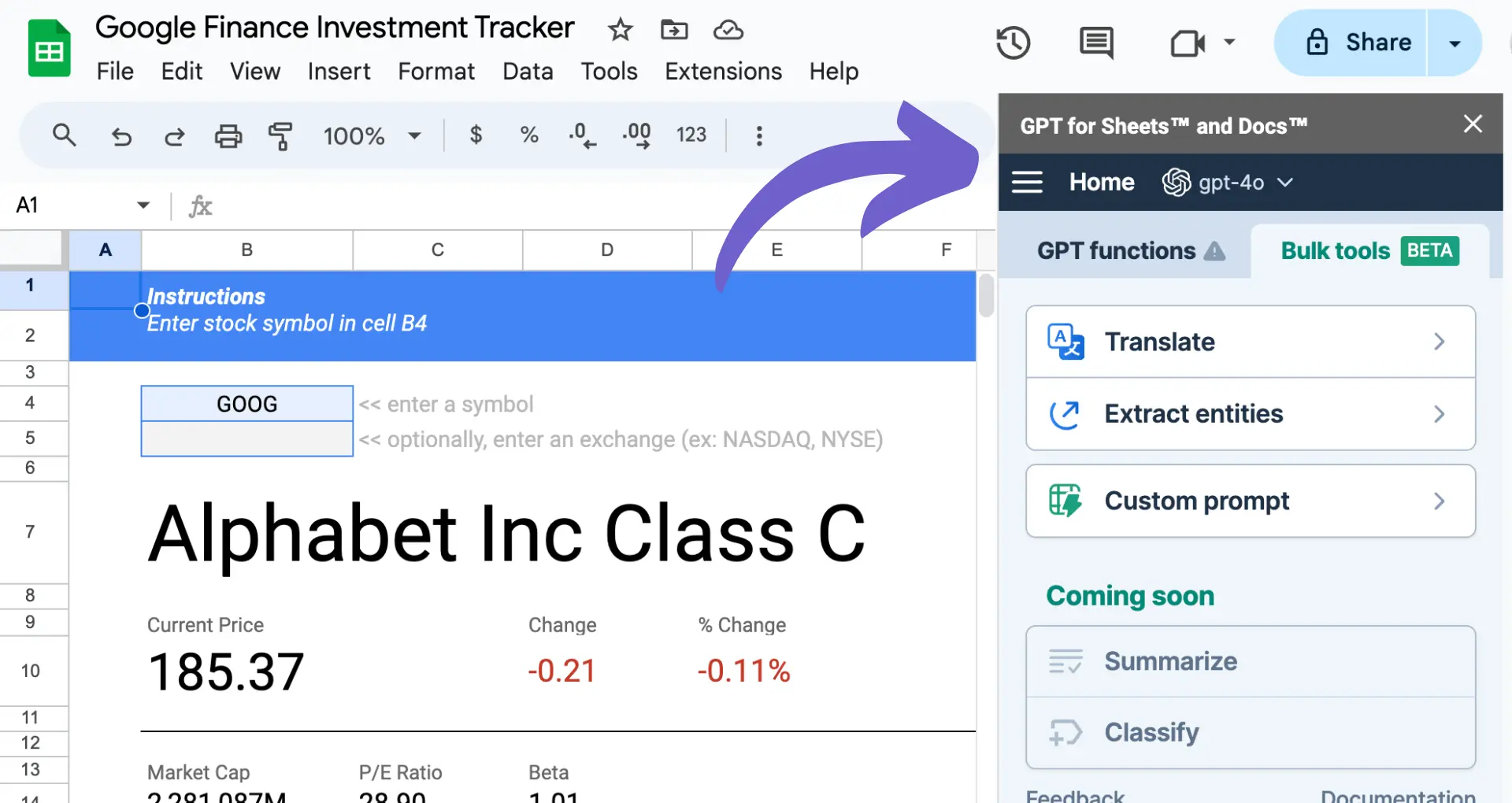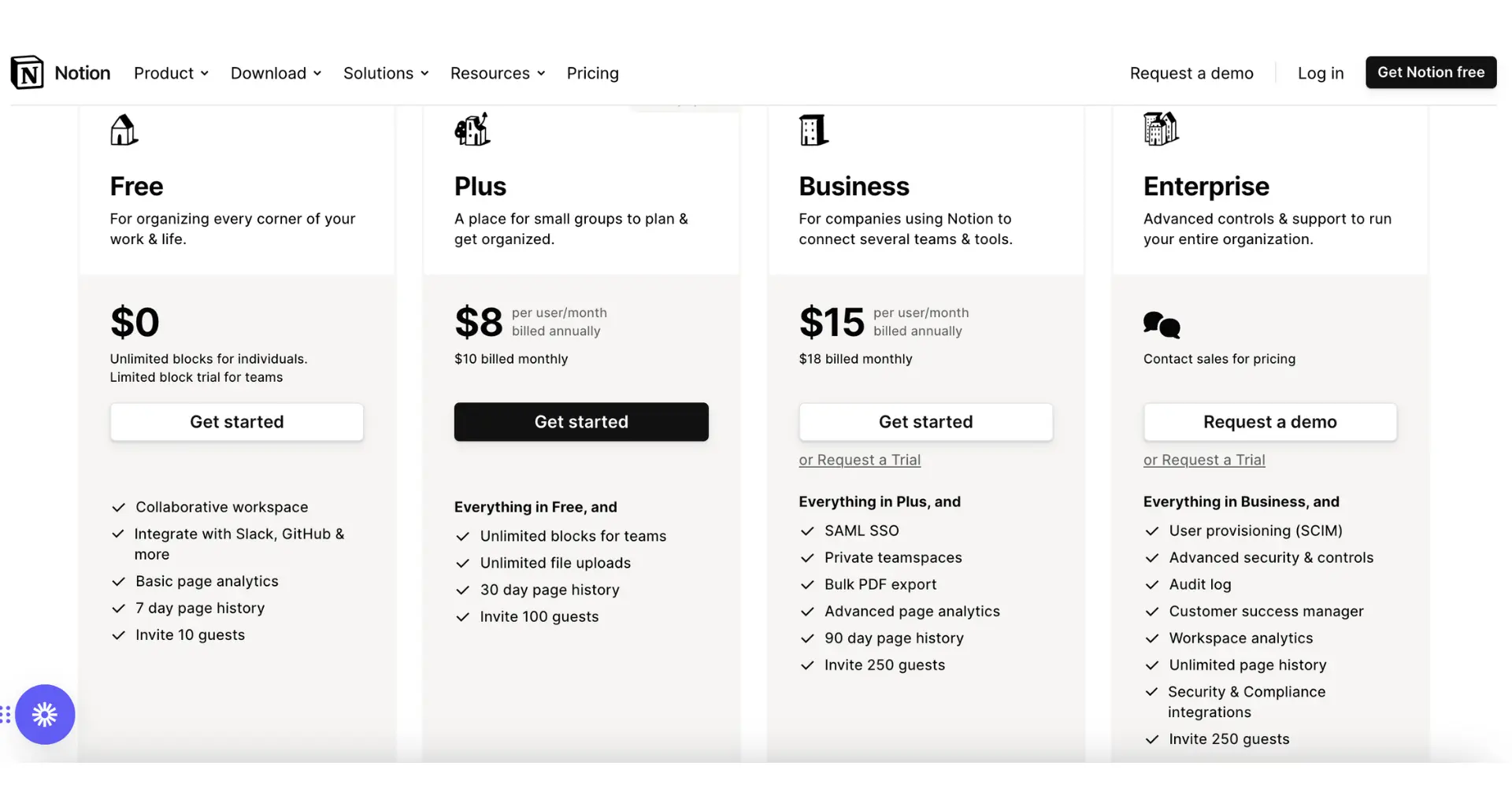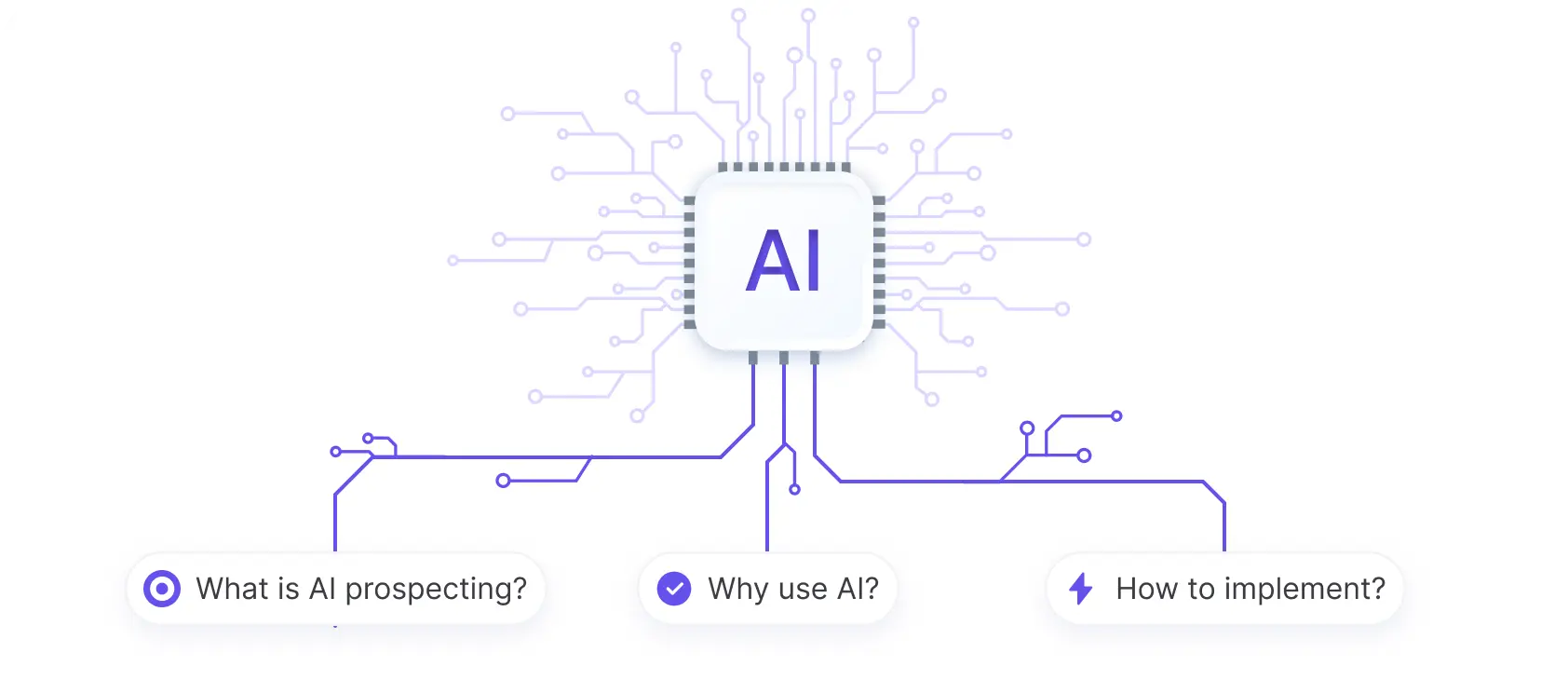





Use conditional formatting to auto color code cells in Google Sheets.
By the way, we're Bardeen, we build a free AI Agent for doing repetitive tasks.
If you use Google Sheets, you might love our automation playbooks. They help automate tasks like conditional formatting, saving you time and reducing errors.
Automatically color coding cells in Google Sheets is a game-changer for data analysis and visualization. With conditional formatting, you can quickly highlight important information, identify trends, and make your spreadsheets more visually appealing. In this comprehensive guide, we'll walk you through the process of setting up conditional formatting rules, from basic color coding to advanced custom formulas, and even show you how to automate the entire process using Bardeen.
Imagine being able to instantly spot top-performing sales regions, identify budget overruns, or highlight upcoming deadlines with just a glance at your spreadsheet. By mastering the art of conditional formatting, you'll save time, reduce errors, and gain valuable insights from your data.
So, grab a cup of coffee, open up your favorite Google Sheet, and let's dive into the world of automatic color coding. Your spreadsheets will never be the same again!
Conditional formatting is a powerful feature in Google Sheets that allows you to automatically apply color codes, styles, and visual cues to cells based on specific criteria. By leveraging this tool, you can quickly identify patterns, trends, and outliers in your data, making it easier to analyze and interpret information at a glance. For example, a sales manager could use conditional formatting to highlight top-performing products or regions, while a teacher might color-code student grades to easily spot those who need additional support.
At its core, conditional formatting is a way to visually enhance your data based on predefined rules or conditions. These rules can be as simple as highlighting cells that contain a specific value or as complex as applying a color scale based on a cell's relative position within a range.
Save time with Bardeen automation. Automate Google Sheets tasks, like email classification, with no coding needed.
The primary benefit of conditional formatting is that it allows you to quickly draw attention to important information without having to manually format each cell. This not only saves time but also reduces the risk of human error, ensuring that your data is consistently and accurately represented.
One of the most common uses of conditional formatting is to automatically apply color codes to cells that meet certain criteria. For instance, you might want to highlight all cells that contain a value greater than 100 in green, while cells with values less than 50 are colored red.
By setting up these rules, you can instantly see which data points fall within specific ranges, making it easier to identify trends and patterns. This is particularly useful when working with large datasets, as it allows you to quickly scan the information and focus on the most relevant details.
Conditional formatting can also be used to compare values across different cells or ranges. For example, you could create a rule that compares each cell in a column to the average value of the entire column, highlighting cells that are significantly above or below the average.
Key takeaways from this section include understanding the basic concept of conditional formatting, how it can automatically apply color codes based on specific criteria, and the benefits it provides in enhancing data readability and analysis. In the next section, you'll learn how to set up basic color coding rules to start taking advantage of this powerful feature in Google Sheets.
Setting up basic color coding rules in Google Sheets is a straightforward process that can help you quickly identify important information based on specific criteria. For example, a sales manager might want to highlight cells that contain values above or below certain thresholds, such as sales targets or budget limits. By applying these simple conditional formatting rules, you can easily spot areas that require attention or action.
One of the most common ways to use basic color coding rules is to highlight cells based on numerical thresholds. To set this up, select the range of cells you want to format and navigate to the "Conditional formatting" menu in Google Sheets.
From there, you can choose from a variety of predefined rules, such as highlighting cells that are greater than, less than, or equal to a specific value. For instance, you might want to highlight all cells with values greater than 1000 in green and those less than 500 in red.
By applying these rules, you can quickly identify which data points fall within specific ranges, making it easier to spot trends and outliers in your data.
To access the conditional formatting menu in Google Sheets, simply select the range of cells you want to format and click on the "Format" menu in the toolbar. From there, hover over "Conditional formatting" to reveal the various options available.
You can choose from a range of predefined rules, such as highlighting cells based on their values, text, or dates. Alternatively, you can create your own custom rules using formulas or by selecting specific formatting options.
Once you've selected your desired rule, you can customize the formatting by choosing colors, styles, and other visual elements to make the highlighted cells stand out.
In addition to highlighting cells based on specific values, you can also apply color scales or single color conditions to your data. Color scales allow you to create a gradient of colors across a range of cells based on their values, making it easy to spot patterns and trends.
To apply a color scale, simply select the range of cells you want to format and choose the "Color scale" option from the conditional formatting menu. From there, you can customize the colors and thresholds to suit your needs.
Alternatively, you can apply a single color condition to highlight cells that meet a specific criteria. For example, you might want to highlight all cells that contain the word "urgent" in red, or all cells with dates in the past in yellow.
Key points to remember when setting up basic color coding rules include accessing the conditional formatting menu, choosing the appropriate rule for your needs, and customizing the formatting to make important information stand out. In the next section, you'll learn how to use custom formulas to create even more advanced conditional formatting rules.
While basic conditional formatting rules are sufficient for many situations, there may be times when you need more advanced criteria to highlight specific data points. This is where custom formulas come into play. By using custom formulas, you can create complex conditions that take into account the contents of other cells or specific text patterns, giving you greater control over your data visualization.
Custom formulas in conditional formatting allow you to create rules based on the contents of other cells or specific text patterns. For example, you might want to highlight cells in column A only if the corresponding cell in column B contains a specific word or phrase.
To set up a custom formula, select the cells you want to format, navigate to the conditional formatting menu, and choose "Custom formula is" from the drop-down menu. From there, you can enter your formula using Google Sheets functions and cell references.
By using custom formulas, you can create highly specific conditions that help you identify important data points quickly and easily.
When creating custom formulas for conditional formatting, you'll often rely on a variety of Google Sheets functions to define your criteria. Some of the most commonly used functions include:
By combining these functions with cell references and other operators, you can create powerful custom formulas that help you highlight important information in your spreadsheets.
Custom formulas provide a flexible and powerful way to apply advanced conditional formatting to your Google Sheets data. By leveraging the various functions available in Google Sheets, you can create complex rules that help you identify key insights and trends in your data. Next, we'll explore how to use conditional formatting for dynamic, real-time data analysis.
Save time and focus on your key tasks by using Bardeen's playbook for Google Sheets automations. Let our automation do the repetitive work for you.
Conditional formatting isn't just for static data; it can also be used to provide real-time visual insights for dynamic scenarios. By applying conditional formatting to cells that update automatically, you can quickly identify changes, trends, and important information as your data evolves. This is particularly useful when working with live data feeds, such as sales figures or inventory levels.
One of the most powerful applications of conditional formatting is its ability to provide immediate visual feedback on changing data. For example, if you have a spreadsheet that tracks stock prices in real-time, you can set up conditional formatting rules to highlight cells that exceed a certain threshold or display a specific trend.
To create a dynamic conditional formatting rule, simply select the cells you want to format and set up your conditions as usual. As your data updates, the formatting will automatically adjust, providing you with instant visual cues about the state of your information.
Another valuable use case for conditional formatting is highlighting dates, deadlines, or time-sensitive tasks in your spreadsheets. By using date and time functions within your conditional formatting rules, you can easily identify upcoming milestones or overdue items.
For instance, you might create a rule that highlights cells containing dates within the next week in yellow, while dates that have already passed are marked in red. This visual distinction makes it easy to prioritize tasks and stay on top of important deadlines.
To set up date-based conditional formatting, use functions like TODAY(), WEEKNUM(), or MONTH() in combination with your desired formatting styles.
Dynamic color coding with conditional formatting offers a powerful way to gain immediate insights from your data as it changes in real-time. By leveraging date and time functions, you can also ensure that critical deadlines and time-sensitive tasks are always top-of-mind. Coming up next, we'll explore how Bardeen can help you automate the process of setting up conditional formatting rules, saving you time and effort with enrichment and qualification automation.
While conditional formatting is a powerful tool in Google Sheets, setting up complex rules can be time-consuming and prone to errors. This is where Bardeen comes in, offering a solution to automate the process of applying conditional formatting based on user-defined criteria or templates. By leveraging Bardeen's capabilities, you can streamline your workflow and ensure consistency across your spreadsheets.
Bardeen is a tool designed to automate repetitive tasks, including the setup of conditional formatting in Google Sheets. With Bardeen, you can create custom templates or define specific criteria for your formatting rules, which can then be applied automatically to your sheets.
By using Bardeen to automate conditional formatting, you can save valuable time and reduce the risk of manual errors. This is particularly beneficial when working with large datasets or when you need to maintain consistent formatting across multiple sheets.
To get started with Bardeen, you'll need to define the specific color coding rules you want to apply to your Google Sheets. This can be done by creating a template that outlines the desired formatting based on certain conditions, such as cell values, text patterns, or formulas.
Once you've defined your rules, Bardeen can automatically apply them to your selected sheets or ranges. This process is much more efficient than manually setting up conditional formatting for each cell or range, and it ensures that your rules are applied consistently throughout your spreadsheet.
Bardeen simplifies the process of implementing conditional formatting rules, making it accessible to users of all skill levels. Whether you're a spreadsheet novice or an experienced user, you can take advantage of Bardeen's automation capabilities to enhance your data visualization and analysis.
By automating conditional formatting with Bardeen, you can unlock new possibilities for your Google Sheets workflows. From color coding based on complex criteria to maintaining consistent formatting across multiple sheets, Bardeen streamlines the process and helps you work more efficiently.
Save time and focus on your key tasks by using Bardeen's playbook for Google Sheets automations. Let automation do the repetitive work for you.
Automatically color coding cells in Google Sheets is crucial for enhancing data visualization and making your spreadsheets more intuitive and user-friendly.
In this comprehensive guide, you discovered:
By mastering the art of automatic color coding, you'll transform your Google Sheets into visually appealing and informative masterpieces. Happy color coding!










SOC 2 Type II, GDPR and CASA Tier 2 and 3 certified — so you can automate with confidence at any scale.
Bardeen is an automation and workflow platform designed to help GTM teams eliminate manual tasks and streamline processes. It connects and integrates with your favorite tools, enabling you to automate repetitive workflows, manage data across systems, and enhance collaboration.
Bardeen acts as a bridge to enhance and automate workflows. It can reduce your reliance on tools focused on data entry and CRM updating, lead generation and outreach, reporting and analytics, and communication and follow-ups.
Bardeen is ideal for GTM teams across various roles including Sales (SDRs, AEs), Customer Success (CSMs), Revenue Operations, Sales Engineering, and Sales Leadership.
Bardeen integrates broadly with CRMs, communication platforms, lead generation tools, project and task management tools, and customer success tools. These integrations connect workflows and ensure data flows smoothly across systems.
Bardeen supports a wide variety of use cases across different teams, such as:
Sales: Automating lead discovery, enrichment and outreach sequences. Tracking account activity and nurturing target accounts.
Customer Success: Preparing for customer meetings, analyzing engagement metrics, and managing renewals.
Revenue Operations: Monitoring lead status, ensuring data accuracy, and generating detailed activity summaries.
Sales Leadership: Creating competitive analysis reports, monitoring pipeline health, and generating daily/weekly team performance summaries.